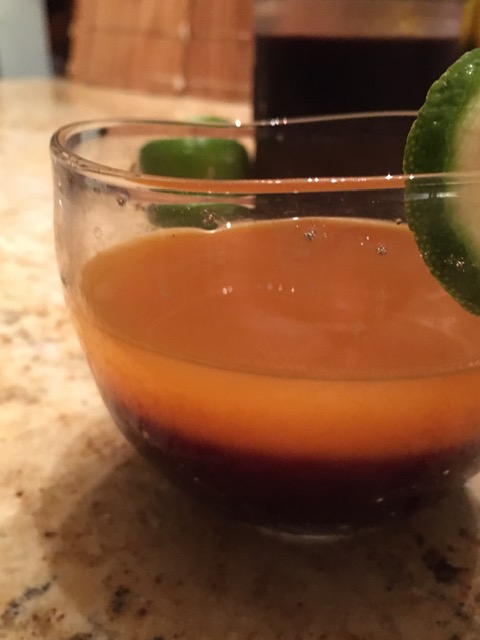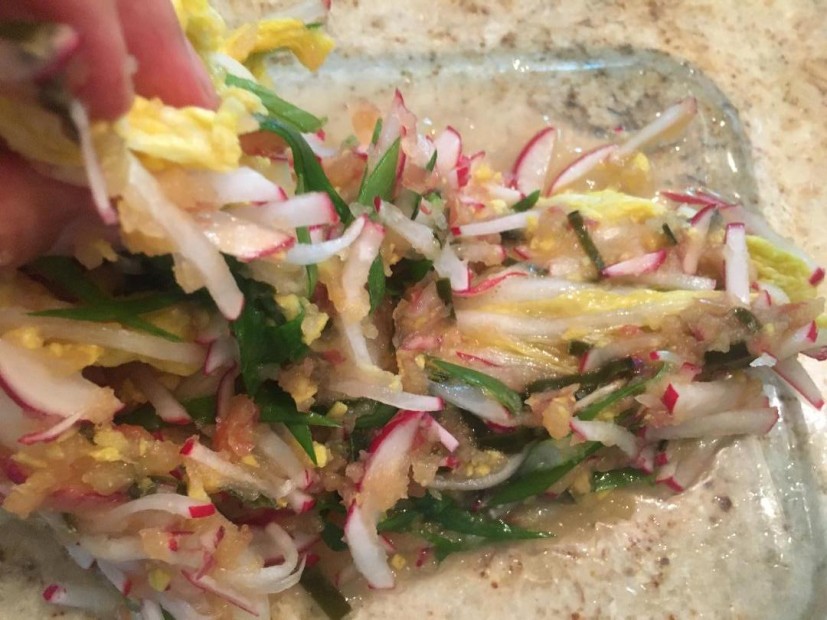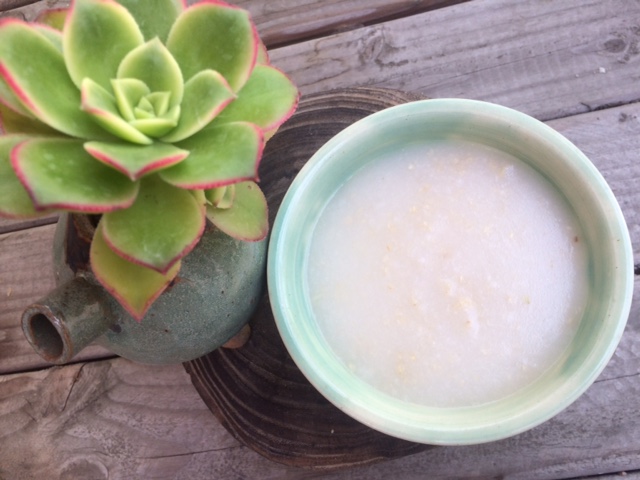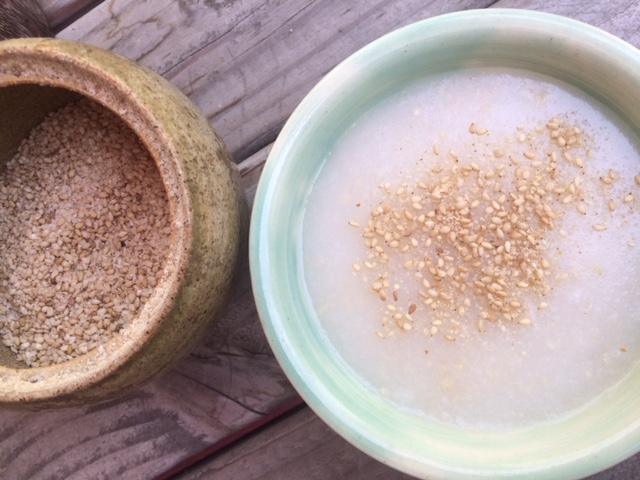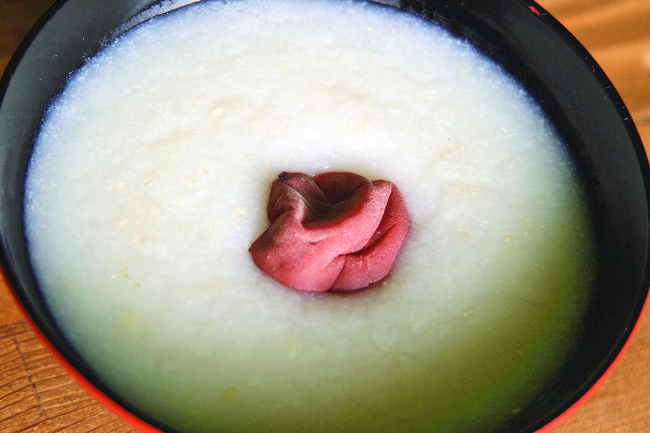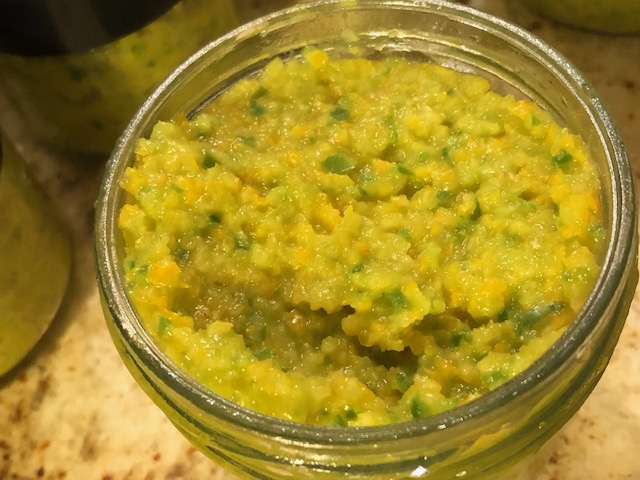
In Japan, there are other citrus fruits besides lemons and limes. Yuzu, Sudachi, Kabosu, and Yuko and more. I love Yuzu because of its unique aroma. I have seen more Yuzu in Asian markets last ten years, but I have yet to see other citrus fruits here.
Lemon has a clearing, pungent flavor and a tangy sourness when you put it in your mouth (Meyer lemon is different). The scent of lime is slightly lighter than lemon, but when harvested before the matured stage, it has a solid tangy acidity, and the character is a light yet fresh and pleasant scent than lemon.
Yuzu has different enjoyment tastes depending on harvested time: when it is still green or yellow ripe. After ripening, the juice has a slightly sweet and refreshing flavor and somewhat neutralized acidity.
After about three years of planting a yuzu tree in my garden, I was excited when it finally produced even one fruit. We used it only zest preciously.
The following year, I harvested a small but a few more fruits. We mixed the zest of green yuzu (green yuzu season from July to August) and the yuzu fruit to make a yuzu paste. It was simple but so flavourful, and we enjoyed it so much. Since I only harvested a few yuzu fruits, we could only make a small amount of yuzu paste, so we used it for hot pot vegetables and salads, and it was gone in no time.
I wished it would be nice to make it more.
A few months later, a friend in Clovis contacted me she had harvested yuzu, more than she could use, so we went to pick them up on the way back from North Fork. She gave me so many Yuzu fruits!
Wow, somebody was listening to my wish; I was grateful.
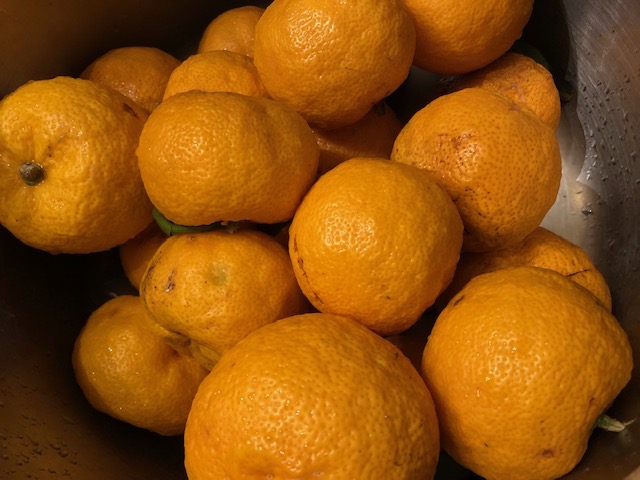
I suggested making *Yuzu Kosho to Eric this time.
*Yuzu Kosho is a type of Japanese seasoning/condiment.
Kosho means in Japanese “pepper or peppercorn,” so usually white or black pepper. Yuzu Kosho originated in Oita, Kyushu (south island).
Since it is called “kosho” pepper, I thought it would be made with yuzu and white or black pepper, but I found out that in some parts of Kyushu, pepper is an old word that means Japanese chili pepper, not white or black pepper.
I never tasted homemade Yuzu Kosho, and the commercial Yuzu Kosho is usually made with “green yuzu.”
The yuzu fruits I got from my friend were “ripe yellow yuzu,” so I wondered how they came out as Yuzu Kosho.
I heard that ripe yellow yuzu has less bitterness, mild taste, less spiciness, and a sweet aroma, so I was excited even before I made it.
I’m not so good with spices, so I used fewer chili peppers, giving a perfect hint of spicy taste blended with a rich aroma!
Yuzu Kosho Recipe
Ingredients:
100g Yellow Yuzu zest
25g Green Chili pepper (Japanese Green Chili is recommended, but we used Jalapeno chili)
25g Sea salt
* These ingredients are what we used – most of the recipes you find they use Yuzu and Chile pepper are the same quantity, and sea salt is one-third of the Yuzu amount. You can adjust how spicy and salty by your preference.
Instruction:
1. Wash yuzu fruits and green pepper with water and dry them with a kitchen towel.
2. With a knife, remove any black spots on the skin and cut yuzu fruits in half. Remove the seeds (Yuzu has so many seeds I used a tiny spoon to pick them out.) Separate yuzu fruit from the skin. Avoid the white pith under the skin’s surface between the peel and the fruit as much as possible. If you use the pith, it will make the yuzu kosho bitter. We scraped the pith with a knife carefully to take the pith as much as we could.
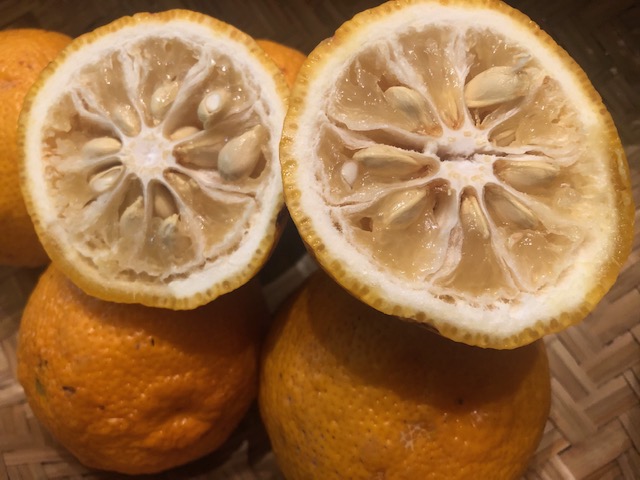
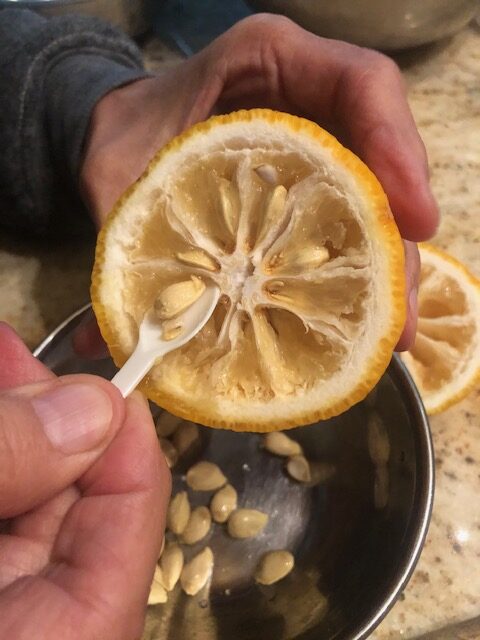
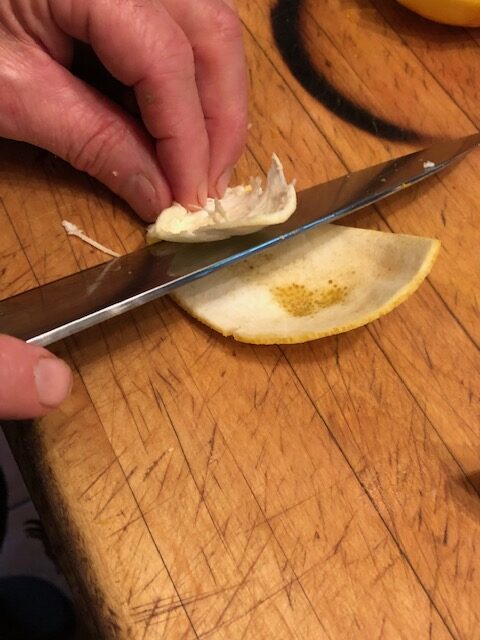
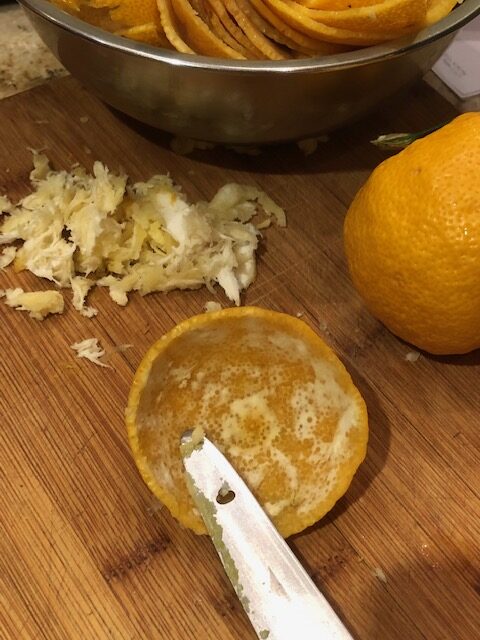
3. Cut yuzu skin.
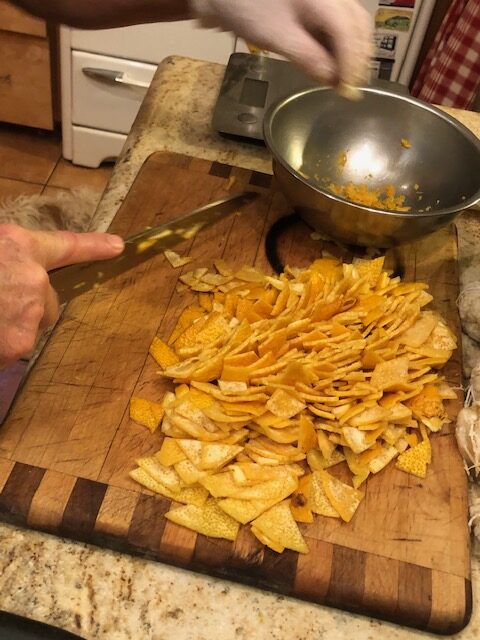
4. Remove the seeds and stems of green chili peppers, which have a potent stimulant and can irritate the eyes and skin of some people, so be careful if you have sensitive skin (you might want to use kitchen gloves and don’t touch your eyes or mouth when preparing).
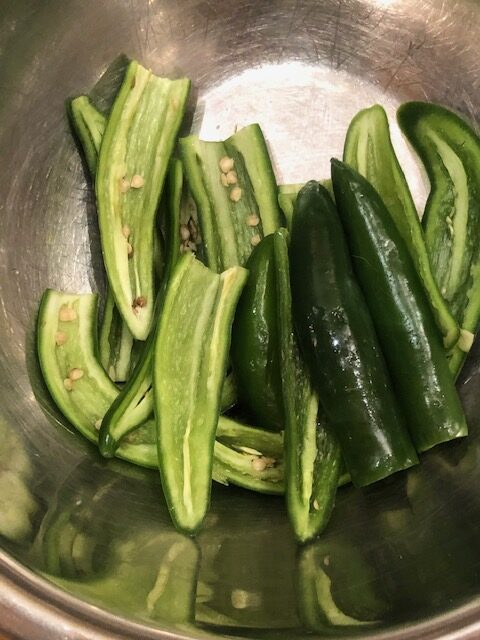
5. Place yuzu skins, green chili, and sea salt into a food processor. Smooth over the ingredients. Keep processing until the ingredients become well combined and smooth.
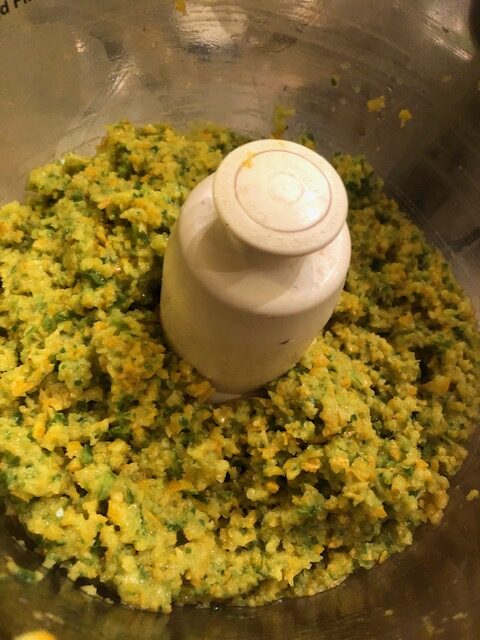
When I did not have a food processor, I used a grater.
I did not need to remove the fruit or pith when I used the grater. After washing and drying out the yuzu, grate the skin surface, but I had to remember not to include pith as much as I could.
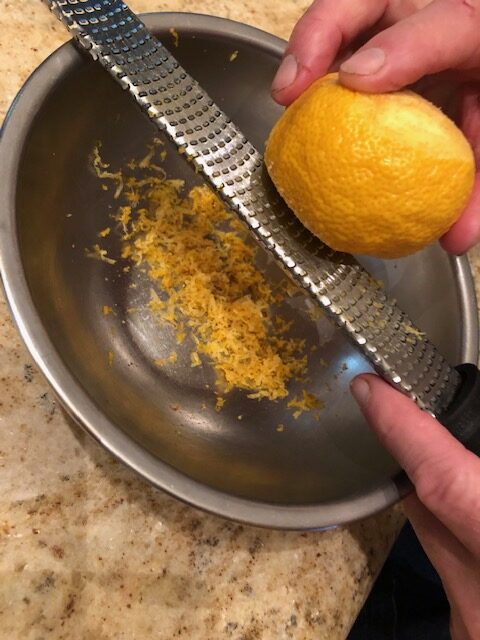
I ground the grated yuzu skin first, then finely chopped green chili, and sea salt at last in my Japanese mortar, ceramic Suribachi, and wooden pestle, Surikogi.
It took time for me to make it this way, so if you are going to use a pestle, be ready to have your patience and time.
6. Prepare the jars using as hot water bath canning method to preserve the yuzu kosho.
Yuzu kosho is ready to use for dishes.
I like to keep it in the fridge for at least one week, the spiciness becomes milder, and the flavor is more harmonized.
If you have juice left, you can use it for dressing or dip sauce with miso or tamari or soy sauce for steamed tofu, dumpling, and potsticker. Enjoy!
One of my cats, Tin Tin loves Yuzu aroma so he stayed in the kitchen while we were making.

Love, Sanae ❤️

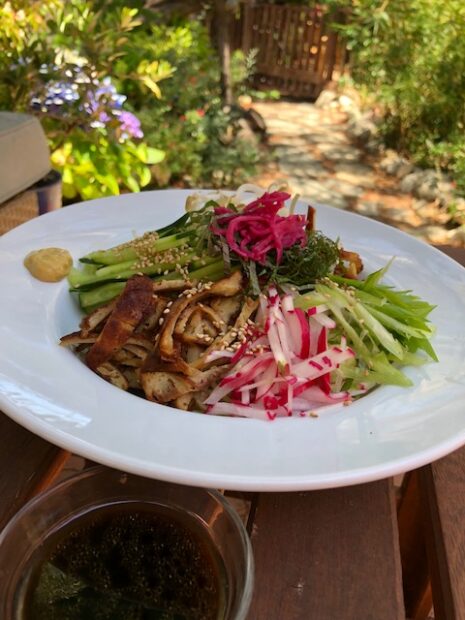
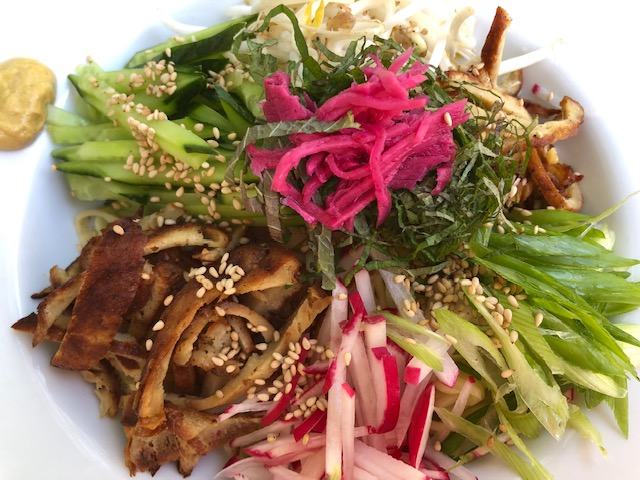
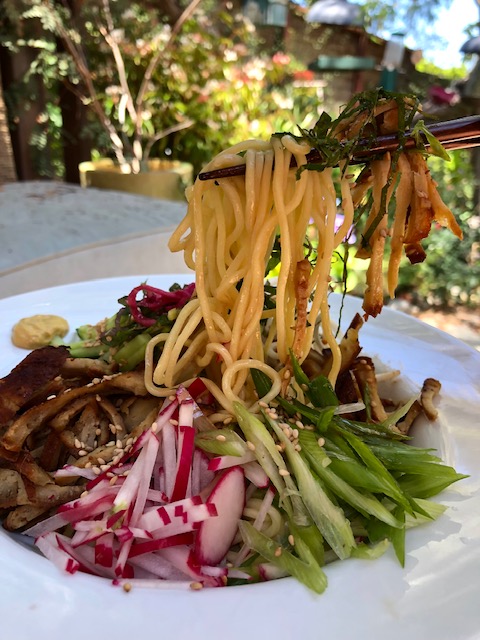
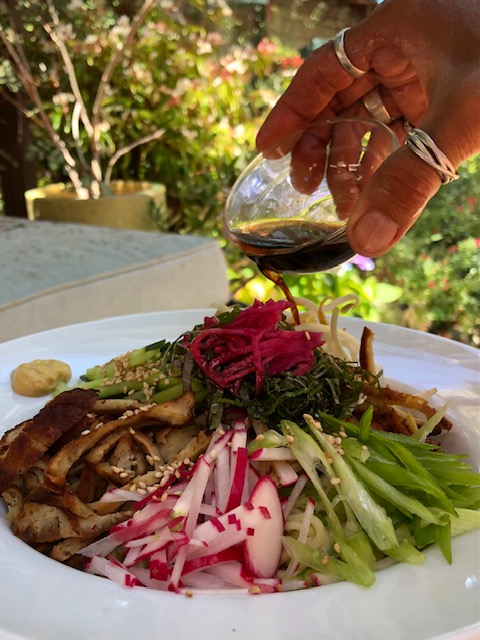
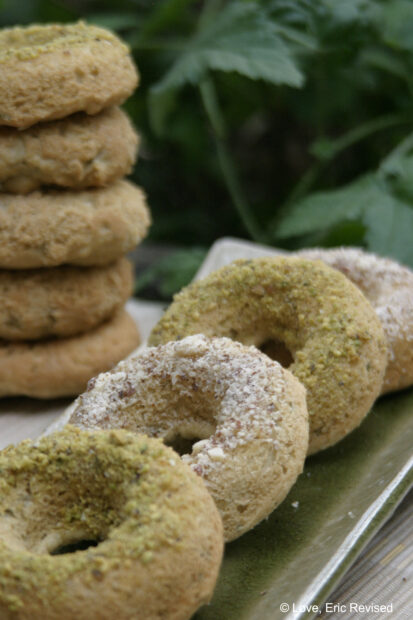
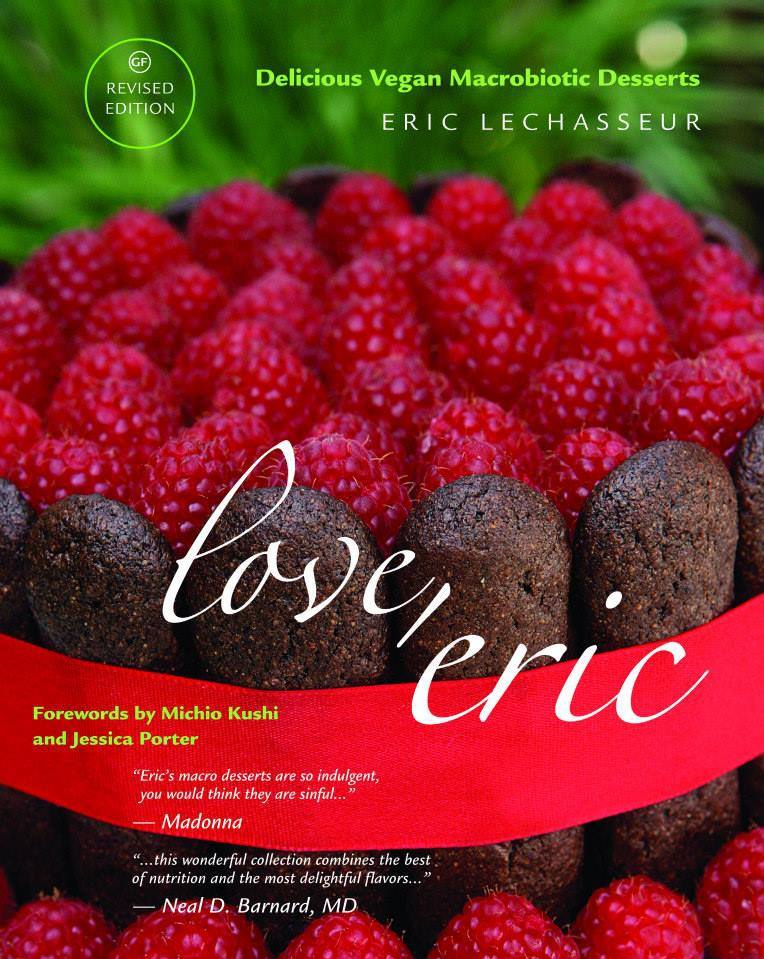
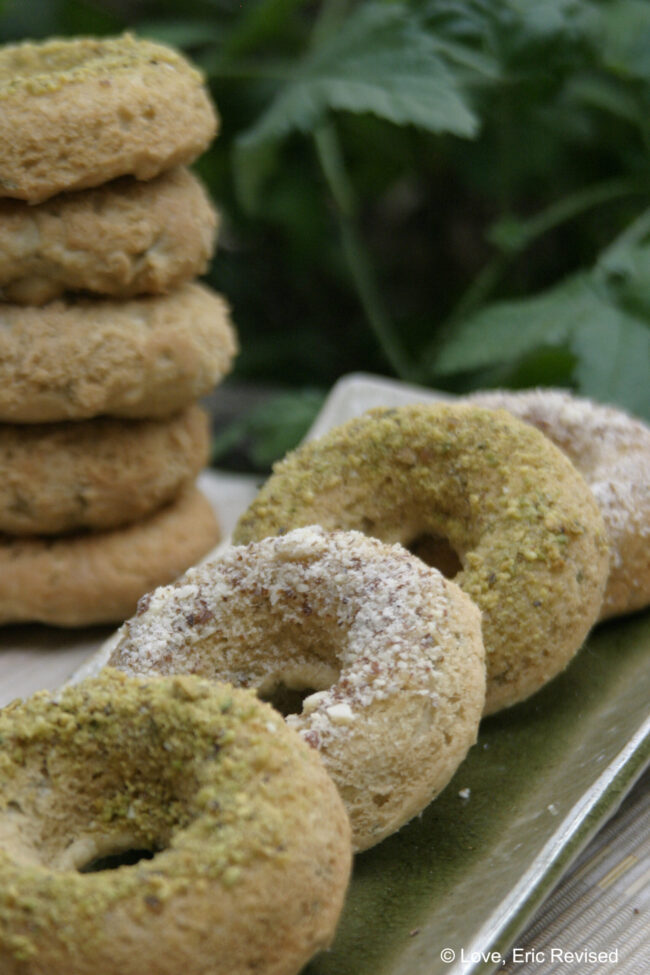
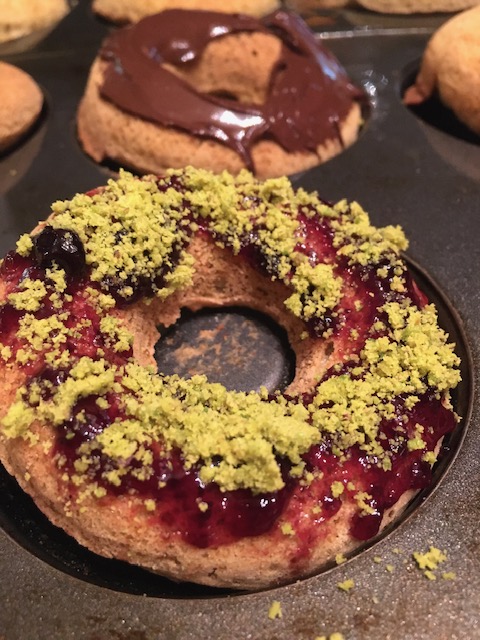


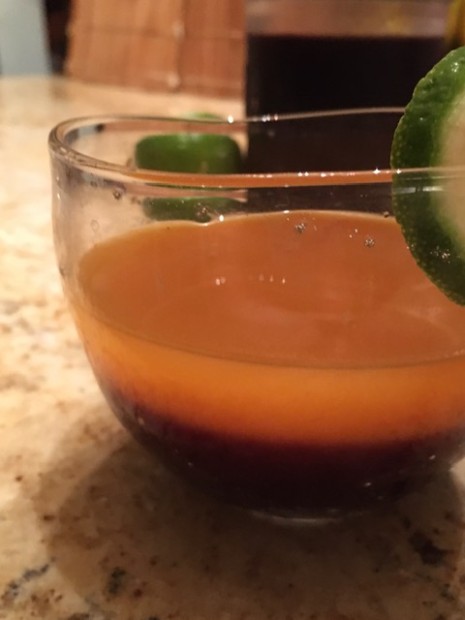





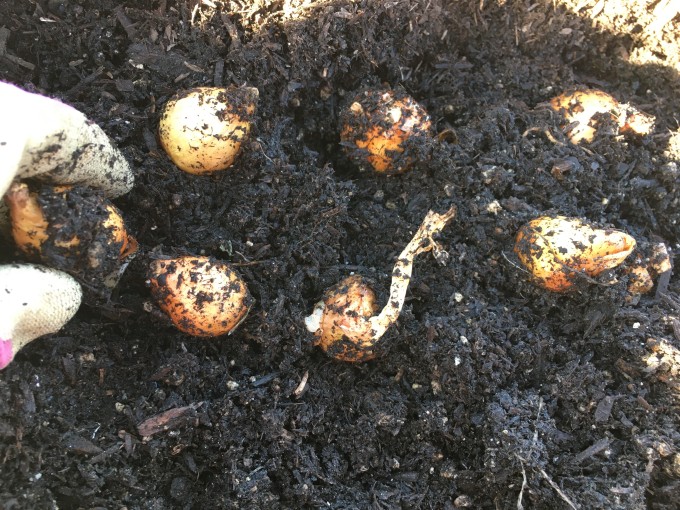

 I am grateful for this relaxing last day of 2020.
I am grateful for this relaxing last day of 2020.